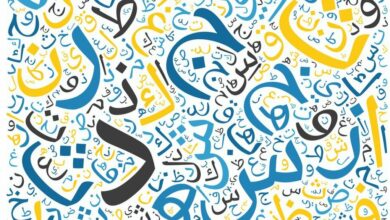Comparative Study of Drafting Tool names (in Kurdish , English, and Arabic)

Prepared by the researcher – Dr. Safia Zivingi
Democratic Arab Center
Journal of Afro-Asian Studies : Ninth Issue – May 2021
A Periodical International Journal published by the “Democratic Arab Center” Germany – Berlin. The journal deals with the field of Afro-Asian strategic, political and economic studies
:To download the pdf version of the research papers, please visit the following link
Abstract
This research compares the linguistic methods that are used in the Kurdish, English and Arabic languages, to name the machines , devices and tools .
It is noted that these languages depend on two methods, the first one is the derivation method (by adding the morphological suffixes), and the second method is the synthase method (by compounding several words to each other) to name the names of the tools .
Finally, the study suggests several linguistic methods to regulate language development to create the tool names .
- Results:
The Arabic language uses the prefixes and interfixes, whereas the Kurdish language uses the suffixes, and the English does not have organized rules for tool names .
These linguistic methods should use organized rules for naming the tools to avoid turmoil, improvisation and multilingualism, by allocating each morpheme in a specific field. For example, the morphemes of tool names could be classified according to their shapes, sizes, functions, mechanical properties, physical movements, or powerful, and so on. This classification could be done according to the properties, capabilities, and energies of each language.
- Introduction:
The organizing the formulation of the tool names is very important in this time due to the great evolution in the innovating new devices and machines, so the language should be progresses in parallel with the progress of the world in all fields
In this research, we will learn ways to draft the names of tools in each of the Kurdish, English and Arabic languages, and offer suggestions for organizing and enriching these formulas.
In the Kurdish language : –
There are two types of tool names in the Kurdish language, the rigid name which is not derived, for example ( kêr “=knife” , şûr “= sword” , pênûs “=pen”), and the second type is the standard derivation of names. We are going to recognize these forms in this paragraph
We can know some of the ancient methods of tool names, From one of the sources of ancient Kurdish literature, through poems Mullah Al-Jezire’s, for example, he used suffix (kar) to refer to the tool names , such as word( mûkar “=beak”): This word means wood mortising machine. This suffix also indicates the subject. ( zivingi : 2017)
But in the modern Kurdish language, there are several suffixes added to words, to derive the tool names, for example:
(-ing): This suffix is added to the root of the verb in the present tense to make tool names, such as: kolimg (=Excavator), parzing (=colander), bêjing (=sieve), saring (=chilled) ….
(-ok): It is a suffixes that add to the adjectives to make tool names, such as : behrînok (= the hand fan) , and firoke (=the plane).
(-ek) : It is a suffix used to call many machines, such as: guvaştek (= the juicer), fironek (= the kite), hincinînek ( =the chopper), and others.
There are many tool names end by the suffix (k), such as : berf malk (=snow broom) . berfmalk (=broom). kartik (=Abrasive), bawe îşnk (=small fan), basark (=air-conditioned)
(-ar) ): girar , xirar , guhar(=ear jewelry) …. (Tan : 2011)
There are compound tool names which consist of a combination of two words, such as: caw bir )=scissors) , ferax şo (=dishwasher), qap şo (= dishwasher)…..
Sometimes the tool names don’t have a specific regular morphological rules, they could be a combination of two words, and this words vary according to multiple vocabularies that indicate the same meaning. For example, there are several words that refer to the fan, most of which are composed of the word (air) attached to another word, but these compounds vary in the diversity of their vocabulary. Such as : air distributor, air engine,…… by the following combinations :
Bakêş = behrînok = bajen = baweîşn (=air regeneration machine).
It is noted that there are some suffixes that used in Kurdish language to indicate the tool names, but they also share with formulas that indicate the subject , for example : ar, er, kar, ker, ek, ok.
– English language :
It is common in English to use the suffix of the subject (er), to refer the tool names, this usage is applied in both cases: the simple and compound names, for examples : dishwasher, freezer, juicer , mixer, blender , vacuum cleaner, and blender …. Some of these tool names are compound of more than one word. Also, the suffix (er) shares with formulas of the tool names, the subject, and occupation.
There is a suffix similar to it denoting the tool names as (or), such as: scissor , elevator , refrigerator , tractor , calculator …
There is a common characteristic between the Kurdish and English languages that the suffixes indicating the subject, machine names, and professions names, in them, mostly end with (-r) Examples of these suffixes in the Kurdish language: -dar, -kar, -ker, -ger (-eger), -ar . because the feature of this sound is repetition, the same applies to these derivatives that have the characteristic of the recurring movement.
English rarely uses a specific morpheme to refer to the tool names, so that there are no regular rules in the formulation of tool names.
English mostly uses the synthase disorganized method .( such as: vacuum cleaner , washing machine ….).
It also contains many vocabulary words that are not to organized rules in derivation, such as: fridge, rocket ……).
Also that each morpheme has many functional meanings , so are the vocabulary , each word has several meanings. such as: saw, plow, tweezers, drill bit , cooler, spindle, pickaxe, elevator , rocket, computer….
- Arabic language:
There are seven famous formulas of tool names, which are formulated only from the transitive triple verb (a three-letter verb), as such the following:
Formulas (mif‘al) : (as : minshar “= saw”, mismar “= stud” , mihras “= plow” , mithqab ” =drill bit” …)
Formulas (mif‘el): (miqas “=scissor”, mis‘ed “=elevator “….)
Formulas (mif‘ele): ( mi‘sere “=juicer” , mibshere “=grater”….)
Formulas (f‘‘eal ): (berrad “= refrigerator”, jerrar “= tractor” ….
Formulas(f‘‘eale):(gassale”=washing machine”, jellaye “=dishwasher”
Formulas (fa‘ol) : saroh “=rocket” , hasob “=computer”…
Formulas (fa‘il ): hasib “=calculator” . (GHALLAINI. 1993)
It is noted that these forms of tool names, are in common with the subject formulas, hyper subject and occupation .
The Arabic language also became to use synthetic for tool names, such as ” ‘ale hasbe (= calculator), shebeke ‘ankebutiye (=network), etc. ….. This trend is influenced by European languages which are characterized by the synthetic feature.
- Conclusion :
It was noted that the three languages, Kurdish, English and Arabic, are used the formulas of the subject, and occupation for naming the tools. English uses the suffix (er), Kurdish uses the suffixes (ar, er, kar, ker, ek, ok), and Arabic uses the formulas of subject and hyper subject (mif‘al, mif‘el, mif‘ele, fa‘ol….) .
The Morphological formulas of tool names have varied in the Kurdish, Arabic and English, through using different methods: derivation and the synthesis methods. That causes difficulties in comparison between morphological formulas of terms in these languages.
The Arabic language uses the prefixes and interfixes, whereas the Kurdish language uses the suffixes, and the English does not have organized rules for tool names, The arbitrary syntactic method prevailed over organized standard derivation .
Moreover, although the derivation method is more organized in the development of language, but the morphological of tool names are limited in comparison to a large number of the names which are used to label tools , machines, and devices.
Languages need a greater of linguistic methods ” morphologically and semantical” to named the machines and devices, as this field is very large.
These linguistic methods should use organized rules for naming the tools to avoid turmoil, improvisation and multilingualism, by allocating each morpheme in a specific field. For example, the morphemes of tool names could be classified according to their shapes, or sizes, by allocating specific morphemes for small scientific devices, and others for a large machines, or by allocating certain morphemes according to the most dominant function of the machine, (such as blending, pressing, kneading, drilling, filtering, breaking, etc.). These functions could be sorted and classified according to their work, whether it is indicative of breakage, smashing and demolition, or vice versa to denote docking, affixing and merging or blending, it may be sorted and classified according to their mechanical properties, physical movements, (such as circular, vertical, horizontal, and spiral movements), its powerful, and so on. This classification could be done according to the properties, capabilities, and energies of each language.
- References :
- GHALLAINI, M. (1993) The Arab Lessons Collector, Publications of the Modern Library, Sidon- Beirut. pp:204
- Tan , Samî . 2011 . Rêzmana Kurmancî , Weşanên Enstîtuya Kurdî , Stenbul , P2. pp : 102-103
- Zivingi , Safia . (2017 ). Spehîtiya Watayên Sofîtîyê di Ferhenga Zimanî ya Dîwana Melayê Cizîrî de , Suran , Berlin . pp: 140




